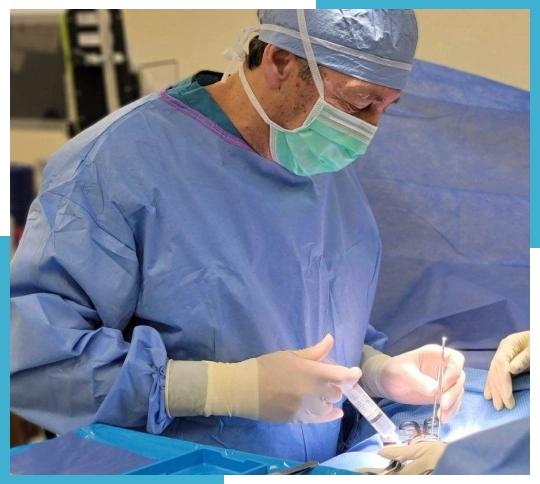Understanding Hernias: Symptoms, Risks, and the Importance of Timely Medical Attention
Hernias are common medical conditions that occur when an organ or fatty tissue pushes through a weak spot in a surrounding muscle or connective tissue. This can result in a noticeable bulge or lump, often accompanied by discomfort or pain, especially when straining or lifting heavy objects. Hernias can develop in various areas of the body, including the abdomen, groin, belly button, and upper thigh. Recognizing hernia symptoms is crucial for timely medical intervention to prevent complications such as incarceration, where the hernia becomes trapped, or strangulation, which can cut off blood supply to the affected tissue and lead to tissue death.
Understanding the signs and symptoms of a hernia can help individuals seek prompt medical attention and receive appropriate care. This blog explores common hernia symptoms, including visible bulges, pain, and changes in bowel movements, as well as signs indicating the need for medical attention.
Understanding Hernia Symptoms
Hernias can develop in various areas of the body, including the abdomen, groin, belly button, and upper thigh. The symptoms of a hernia depend on its location and severity but often include:
- Visible Lump or Bulge: One of the most noticeable signs of a hernia is a visible lump or bulge under the skin, especially when standing or straining. This bulge may disappear when lying down.
- Discomfort or Pain: Individuals may experience discomfort or pain at the site of the hernia, particularly during activities like lifting, coughing, or bending over. The pain may worsen as the hernia enlarges or becomes more prominent.
- Feeling of Heaviness: Some people with hernias report a sensation of heaviness, pressure, or weakness in the affected area, especially after prolonged standing or physical exertion.
- Burning or Aching Sensation: Persistent burning or aching near the bulge site can indicate nerve irritation or strain caused by the hernia protrusion.
- Changes in Bowel Movements: In certain types of hernias, such as inguinal hernias, there may be associated changes in bowel movements or discomfort during bowel movements.
Hernia Diagnosis and Treatment Options
Hernia diagnosis typically involves a physical examination where the doctor checks for the presence of a bulge and evaluates symptoms. Additional tests such as ultrasound, CT scan, or MRI may be ordered to confirm the diagnosis and assess the severity of the hernia.
- Hernia Treatment Options: The approach to treating a hernia depends on its size, location, and symptoms. While smaller hernias may be managed with watchful waiting and lifestyle modifications (such as avoiding heavy lifting and straining), larger or symptomatic hernias often require surgical repair.
- Surgical Intervention: Hernia repair surgery is a common and effective treatment method. It involves pushing the protruding tissue back into place and strengthening the weakened muscle or tissue with stitches or a synthetic mesh. This procedure can significantly alleviate symptoms and prevent complications.
Preventing Hernias
While not all hernias can be prevented, certain lifestyle changes can reduce the risk of developing them:
- Maintain a Healthy Weight: Excess body weight can put additional pressure on abdominal muscles, increasing the risk of a hernia. Maintaining a healthy weight through diet and exercise can help prevent hernia formation.
- Exercise Regularly: Regular exercise strengthens muscles and improves overall fitness, which can reduce the likelihood of developing a hernia. Focus on exercises that enhance core strength without putting excessive strain on the abdominal muscles.
- Avoid Heavy Lifting: Lifting heavy objects can strain the abdominal muscles and contribute to hernia development. When lifting is necessary, use proper techniques, such as bending at the knees and keeping the back straight, to minimize risk.
Hernia Symptoms in Females
Hernia symptoms in females can differ somewhat from those in males due to anatomical differences and the types of hernias more commonly seen in women. Females are more likely to experience femoral hernias, which occur in the upper thigh near the groin. Symptoms of femoral hernias in females may include a noticeable bulge or lump in the groin or upper thigh area, which can become more pronounced when standing or straining. Women might also experience localized pain and discomfort, especially during physical activities or prolonged standing. In some cases, the pain may radiate to the lower abdomen.
FAQs about Hernia Symptoms and Treatment
-
Can hernia symptoms be different in women compared to men?
Yes, women may experience different types of hernias (such as femoral hernias) and may have unique symptoms, including pain and swelling in the groin area.
-
What are the risks of not treating a hernia?
Untreated hernias can lead to complications such as incarceration (where the hernia becomes trapped and cannot be pushed back in) or strangulation (where blood flow to the herniated tissue is cut off, leading to tissue death).
-
How long does recovery take after hernia surgery?
Recovery times vary depending on the type of hernia and the surgical approach. In general, most people can resume normal activities within a few weeks after surgery.
Taking Action on Hernia Symptoms
Recognizing hernia symptoms early and seeking prompt medical evaluation are crucial steps in preventing complications and ensuring effective treatment. Whether you notice a bulge, experience discomfort, or have concerns about changes in your abdominal or groin area, consulting a healthcare provider is essential. With timely intervention and appropriate treatment, individuals can effectively manage hernias and restore their quality of life.
Understanding hernia symptoms and knowing when to seek medical help empowers individuals to take control of their health and well-being. By staying informed and proactive, you can address hernias promptly and pursue the most suitable hernia treatment options for your condition. Consult with our expert today!




